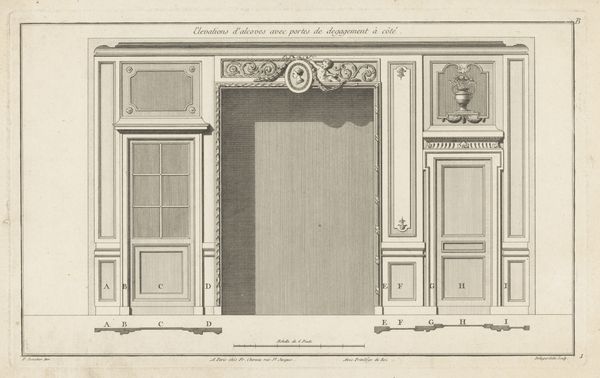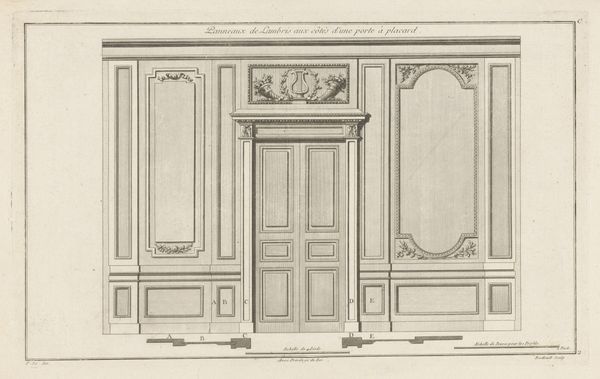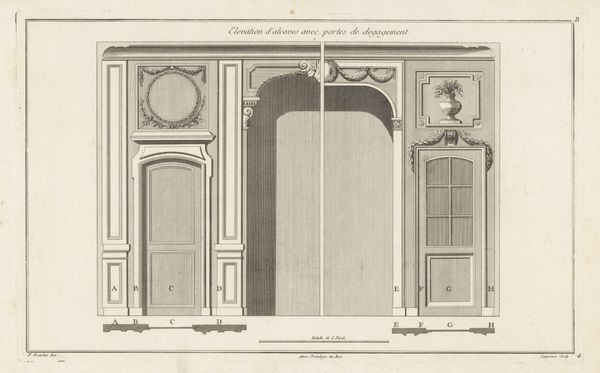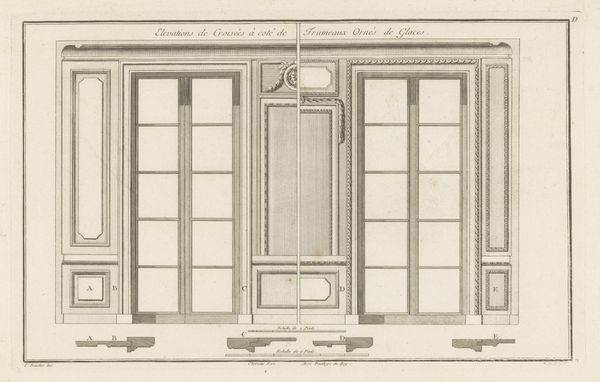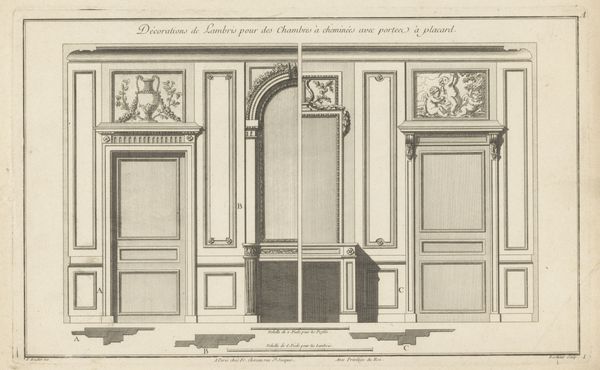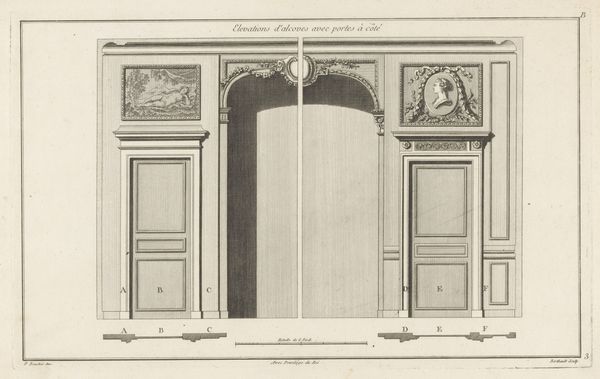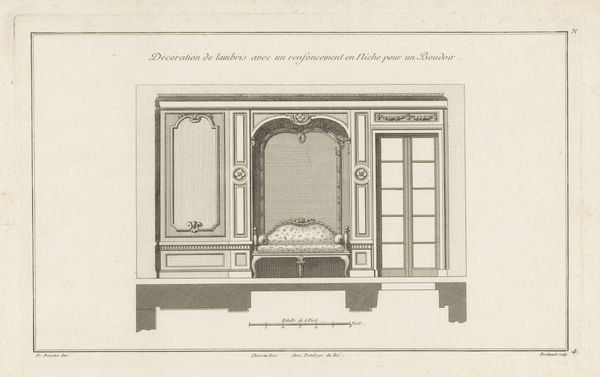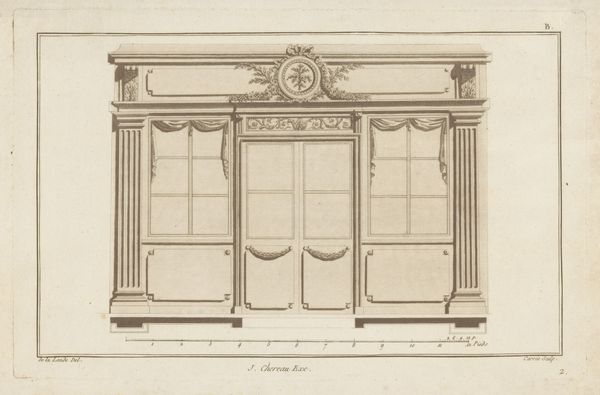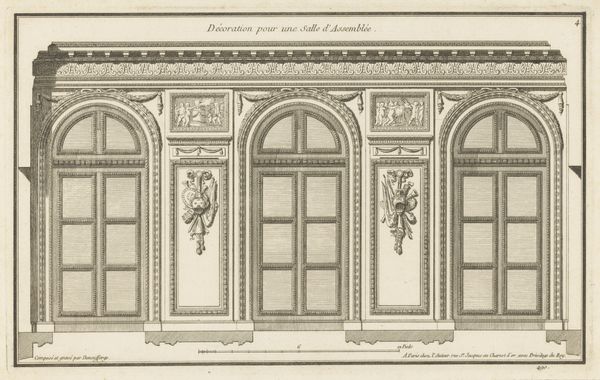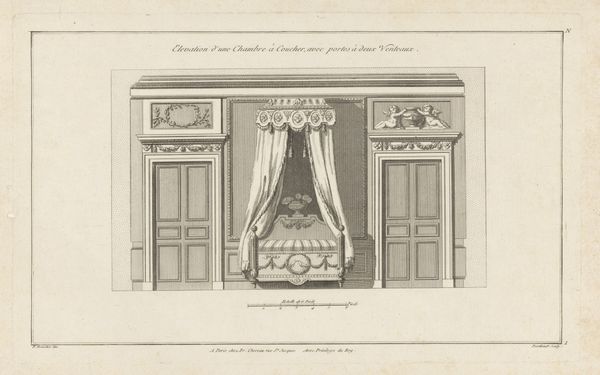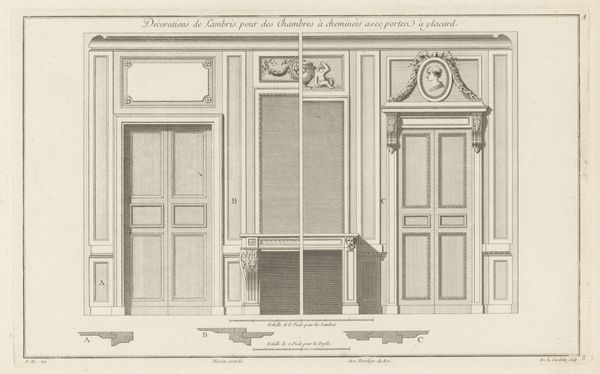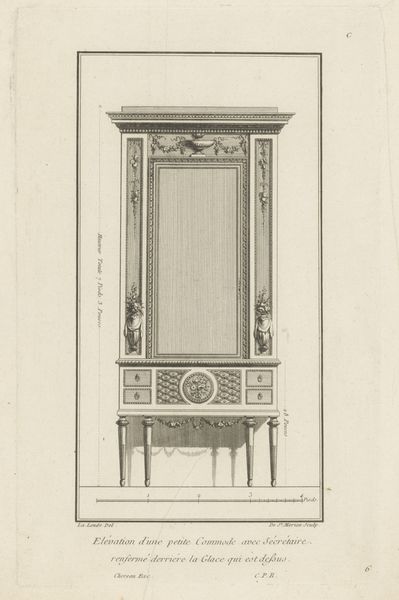
drawing, print, etching, paper, architecture
#
drawing
# print
#
etching
#
paper
#
form
#
line
#
academic-art
#
architecture
Dimensions: height 223 mm, width 361 mm
Copyright: Rijks Museum: Open Domain
Editor: This etching, titled "Venster en panelen met lezende vrouw," created between 1752 and 1794 by Ch. G. Coupeaux and currently housed in the Rijksmuseum, depicts architectural elements – specifically, a window and paneling. It has an almost blueprint-like quality to it. What jumps out to you about it? Curator: I see a fascinating intersection of art and production here. The etching itself, rendered on paper, isn't just a representation of architectural forms but evidence of a specific method of disseminating design ideas and influencing the creation of material spaces for the wealthy class. The etching allows one to examine the means through which architecture becomes an artifact consumed within specific social contexts. How do you view the relationship between the 'art' and the architectural element that this image depicts? Editor: I suppose I hadn't thought of it in terms of consumption. It feels like a straightforward illustration, and its formal details evoke the styles of the past. But your comment made me reconsider. Is this etching made available to a wider audience, maybe for a builder? Curator: Precisely! Consider the labor involved in creating the paneling itself. It would entail woodworking, carving, and the application of surface treatments – skills acquired through training and apprenticeship, and this image serves as the guide to production of those things. These drawings play a role in shaping tastes and, by extension, shaping the physical and material landscape through a specific, crafted, item. What’s more, its lines highlight both architectural precision and material elegance that’s sought after in this moment. Editor: It's a fascinating connection—seeing a print not just as a piece of art but as part of the broader machinery of making. It feels much more interdisciplinary than I initially thought. Curator: Absolutely. By emphasizing materiality, process, and circulation, we can break down traditional categories and acknowledge the intricate web of creation. I am intrigued now – what is your sense of its role, in shaping styles or desires beyond practical building construction?
Comments
No comments
Be the first to comment and join the conversation on the ultimate creative platform.
